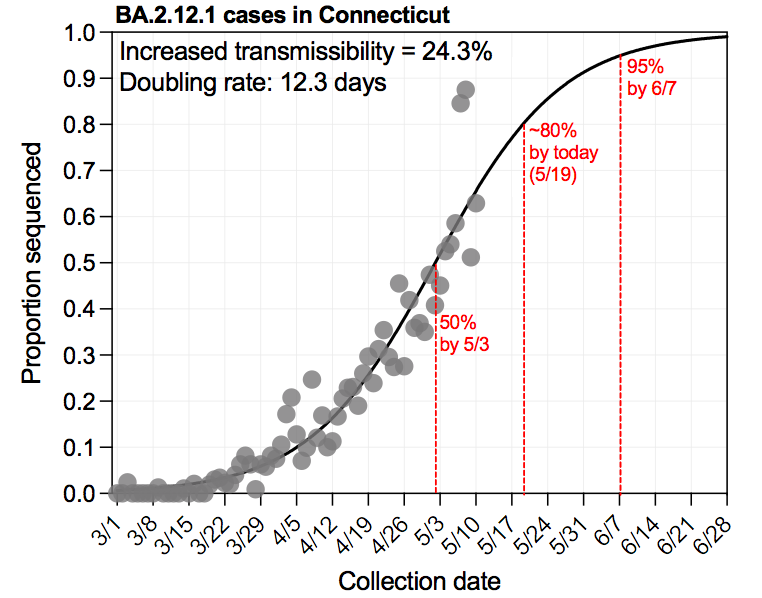🧬7/1 Connecticut #SARSCoV2 variant surveillance
@CovidCT | @jacksonlab | @CTDPH | @YaleSPH | @Yalemed
Alpha (B.1.1.7) = 50% (📉9%)
Delta (B.1.617.2) = 13.6% (📈11%)
short 🧵 | Report 👉
covidtrackerct.com/variant-survei…
@CovidCT | @jacksonlab | @CTDPH | @YaleSPH | @Yalemed
Alpha (B.1.1.7) = 50% (📉9%)
Delta (B.1.617.2) = 13.6% (📈11%)
short 🧵 | Report 👉
covidtrackerct.com/variant-survei…
2/9 Last week when we reported that Delta was only 2.3% I said: "This is probably more of a reflection of noisy data when trying estimate frequencies from a small number of cases", and followed that up with an expectation that we will see Delta 📈.
https://twitter.com/NathanGrubaugh/status/1408158900474449920?s=20
3/9 This week we are seeing the expected 📈 in Delta (B.1.617.2), but the caveat still remains that our estimates are noisy because of the low numbers of sequenced cases (a product of the low numbers of cases, which is a good problem to have 👍) 

4/9 To improve our weekly estimates, we are now also including recently sequenced data from the CDC (typically samples tested by Quest Diagnostics). 

5/9 Interestingly, the frequency of "Other variants" is going 📈 for the first time since our variant surveillance began in early 2021 (see 2x 👆). We are finding that this is being driven by lineage B.1.621. 

6/9 While B.1.621 is not yet listed as a variant of concern/interest, but it has both the E484K and N501Y mutations found in Beta (B.1.351) and Gamma (P.1) that are known to decrease the efficacy of some vaccines. (source = outbreak.info) 

7/9 B.1.621 represents <1% of the cases in the US and has not been detected in many places of the world.
**However**, B.1.621 represents ~15% of the sequenced cases in Colombia, and is recently trending 📈 in association with 📈 cases. (source = outbreak.info)

**However**, B.1.621 represents ~15% of the sequenced cases in Colombia, and is recently trending 📈 in association with 📈 cases. (source = outbreak.info)


8/9 This is not to say that B.1.621 will become a concern here, I'm primarily highlighting what our surveillance system is intended to do: detect emerging lineages so that we can understand its epidemiology and inform public health. I'll provide updates as we learn more.
9/9 I'd like to thank the @CDC_AMD program, especially @dmaccannell, for not only providing financial support for sequencing, but also for 📈 their sequencing efforts to enhance our surveillance program in Connecticut. We greatly appreciate their commitment to open data sharing💪
• • •
Missing some Tweet in this thread? You can try to
force a refresh















